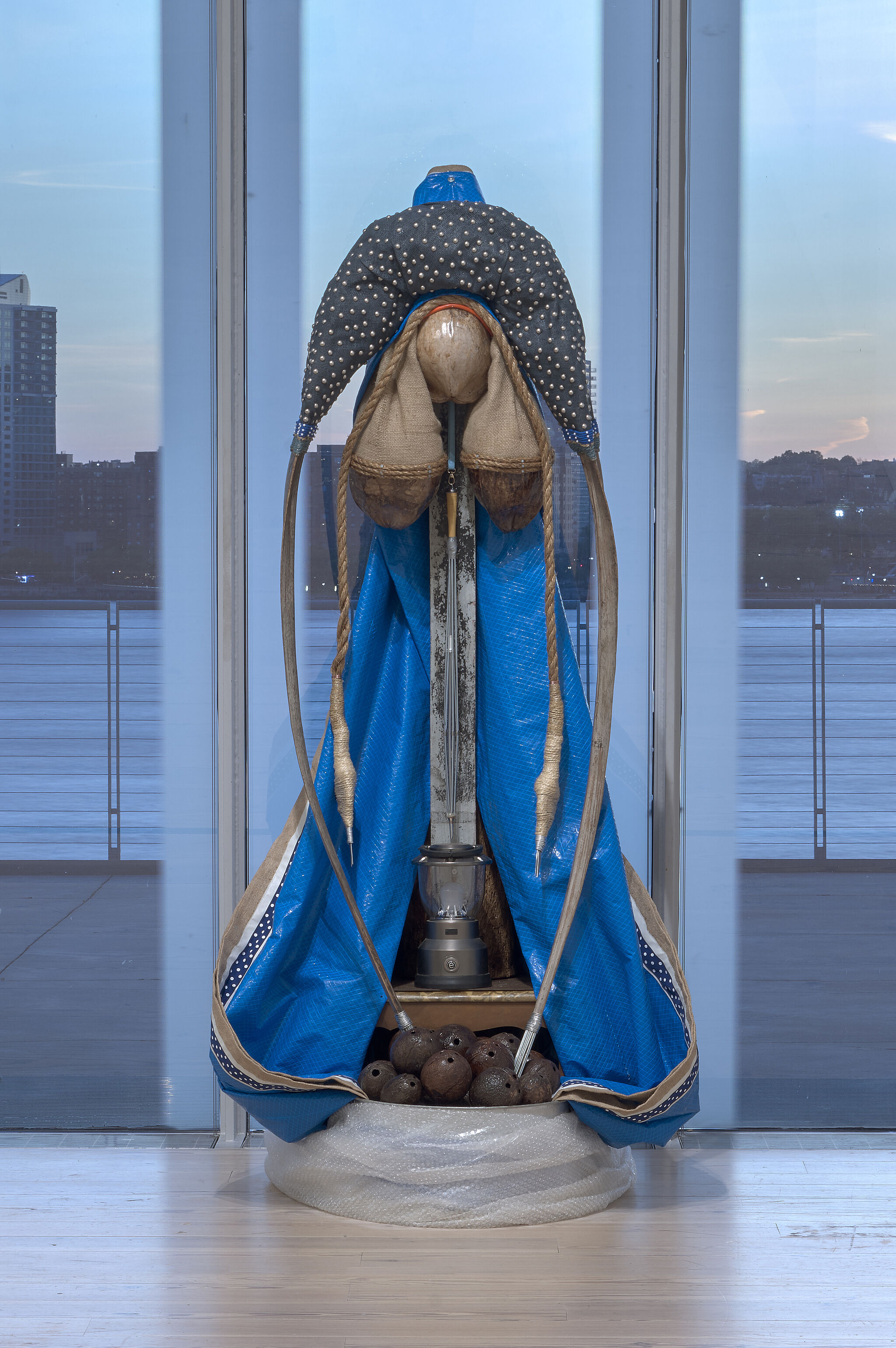Whitney Biennial 2019 | Art & Artists
May 17–Oct 27, 2019
Whitney Biennial 2019 | Art & Artists
Daniel Lind-Ramos
44
Floor 6
Born 1953 in Loíza, PR
Lives in Loíza, PR
Much of Lind-Ramos’s work focuses on the role of Black Puerto Ricans in the island’s colonial history.
With its iconic, haloed form, blue robes, and its title, Daniel Lind-Ramos’s Maria-Maria suggests the Virgin Mary. Closer inspection reveals references to Hurricane Maria, a 2017 storm that killed more than 3,000 Puerto Ricans and destroyed much of the island. In the sculpture presented here, the head is made from a coconut found near Lind-Ramos’s home in Loíza, Puerto Rico, and the robe is composed of blue tarps used by FEMA (the Federal Emergency Management Agency) to patch damaged buildings after the hurricane; intended as a temporary measure, their endurance throughout Puerto Rico has become a symbol of federal neglect and the pervasive effects of colonialist attitudes.
His sculpture 1797: Vencedor gestures to the thwarted British invasion of San Juan, which was defeated in part thanks to the Black militia of Loíza and Cangrejos.
Maria-Maria, 2019
-
0:00
Daniel Lind-Ramos
0:00
Daniel Lind-Ramos: Maria-Maria deals with ambiguity of a narrative after María, after the hurricane.
Narrator: Daniel Lind-Ramos lives in the Puerto Rican town of Loíza, on the north coast. Like much of the island, Loíza was severely damaged by Hurricane María in September 2017.
Daniel Lind-Ramos: Before the hurricane María, the name was really with Christianity, right, good things, protection, love, right. And after María not necessarily. So I wanted to create an image that at first sight maybe it resembles a Virgin, the Virgin María because the blue, the white, etcetera. But then the second glance, you doubt it, as when I hear the name María and I think that many people had that double feeling, right. María María, María María, which María right?
Narrator: The Virgin Mary is typically shown wearing a blue robe. Here, she wears a blue tarp. These tarps were given out by FEMA—the Federal Emergency Management Agency—after the hurricane. They are intended to serve as temporary roofs for a limit of thirty days. Many are still there today.
Daniel Lind-Ramos: So I saw the tarp that is blue protecting you know the the roof of the houses right. And also I relate the tarp with the relationship of Puerto Rico with the States. And then I relate that material, the tarp, with another material related with another political situation or historical situation in Puerto Rico, the coconut. The palm trees were brought by the Spaniards during colonial times. And the coconut tree is also related with another catastrophe, slavery, right. When I choose materials—for me, they have to have something to do with history.

